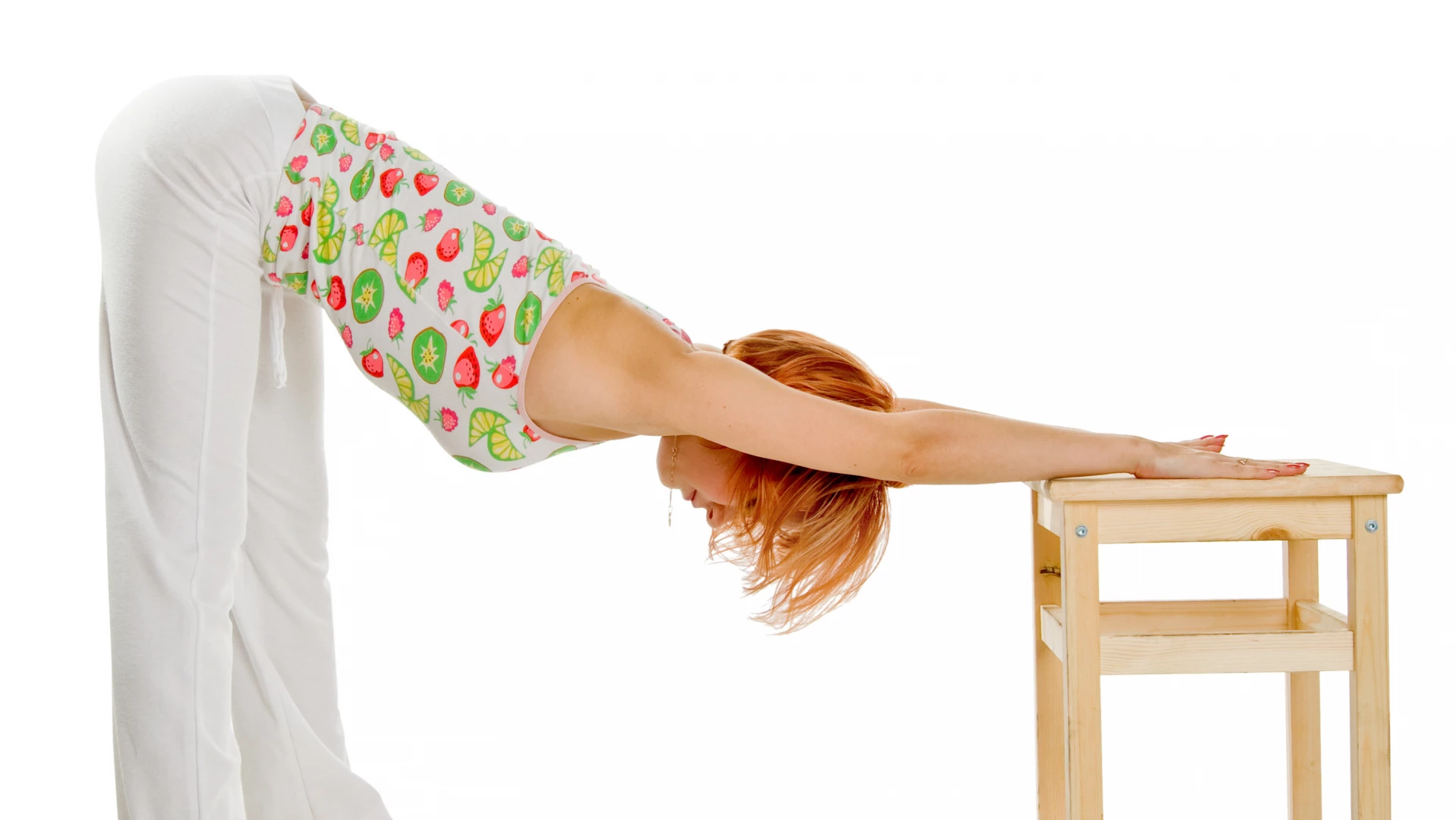Yoga for the Wrists: How to Protect Your Wrists in Yoga Practice

One of the most common complaints for beginning yoga students is that their wrists hurt when doing yoga. And no wonder: The wrist is one of the most delicate joints in the body. I remind my yoga students at least once a week that the human body has evolved to walk upright, freeing the wrists and hands from clomping around on all fours like our very distant ancestors.
And yet, in modern yoga, we are down on hands and knees quite often, with poses such as Marjarasana (Cat/Cow Pose), Hunting Dog Pose, and much more challenging yoga poses for wrist integrity, strength, and flexibility such as Chaturanga Dandasana (Staff Pose), Adho Mukha Svanasana (Downward-Facing Dog) and Urdva Mukha Svanasana (Upward-Facing Dog) poses, and even Adho Mukha Vrksasana (Handstand)! We are often asking a lot of our wrists, and for some it may be too much.
Here are some ways to take care of your wrists:
Simple Yoga Practice: Movements of the Wrist
Start by taking your arms out in front of you with your palms turned up towards the sky—or imagine it.
Flexion: From the starting position, bending the palm of your hand toward your chest. We rarely use this movement in yoga asana, except in the version of Urdva Hastasana (Arms Overhead) where you interlace your fingers, pulling the wrists away from one another, and take your arms overhead, with the backs of your hand facing the ceiling.
Extension: From the starting position, dropping your hand forward and down so the palm faces away from you. We often use this movement in yoga asana, from the slight flexion of Downward-Facing Dog to the 90-degree flexion of Upward-Facing Dog, Plank Pose, Vasithasana (Side Plank Pose), and so on. Sometimes we bear our full weight with our wrists in this position, as in Handstand, and sometimes we bear just a light amount of weight on it, for example, in Extended Side Angle pose (Utthita Parsvakonasana) when the bottom hand is flat on the floor or block.
Abduction: From the starting position, moving the pinky sides of the hand away from the midline of your body. We use this movement when our hand is on the floor or a support to adjust the angle of our hand and wrist, such as in Downward-Facing Dog Pose when we turn our hands toward each other or in Purvottanasana (Upward Plank Pose) when we turn our hands out a bit.
Adduction: From the starting position, moving the pinky sides of the hands towards each other, toward the midline of your body. We use this movement when our hand is on the floor or a support to adjust the angle of our hand and wrist, such as in Downward-Facing Dog Pose, when we turn our hands away from each other or in Upward Plank Pose when we turn our hands toward each other.
Note on Rotation: Although it feels like the wrist joints can rotate, this action actually comes from the forearm bones rolling over one another, not from the wrist joint itself rotating.
Cautions for the Wrist Joint When Doing Yoga
Now let’s look at what movements we might want to avoid. Keep in mind, however, that we want to maintain as much of our wrist joints’ full range of movement as possible. So, in many instances, my caution will not mean “don’t” or “never,” but rather approach cautiously and stop if the movement worsens pain.
In general, most people can safely do all of the wrist movements if they are not bearing weight on the hands and wrists. In fact, a famous study published in JAMA in 1999 Yoga-Based Intervention for Carpal Tunnel Syndrome looked at using yoga to address one of the most common maladies of the wrist, carpal tunnel syndrome, and all of the poses used were non-weight bearing poses. So even if you have wrist issues, you can still do a modified practice using lots of our poses!
Generally avoid a particular wrist movement if:
-
The movement increases pain or numbness due to a painful wrist condition that is chronic, such as longstanding repetitive strain injuries of the wrist, general arthritis or thumb joint arthritis, or more acute, such as acute sprains and strains of the wrist, carpal tunnel syndrome or new ganglion cysts.
-
If you have significant swelling in the joint—whether from an acute injury or the flare of a chronic condition—and the swelling inhibits a particular movement or elicits significant pain during the movement.
Now for the specific movements. Who should avoid or minimize the following movements?
Flexion
-
Those with carpal tunnel syndrome, which can worsen with flexion, even when non-weight bearing.
-
Those with arthritis of the wrist that becomes more painful with flexion, especially when weight bearing.
-
Those with a ganglion cyst (which usually appears on the back of the wrist).
Extension
-
Those with hyper-flexible wrist joints may want to avoid full extension in weight-bearing poses to avoid wear and tear on the internal wrist structures and overstretching ligaments.
-
Anyone who experiences significant numbness and tingling in the fingers and hands in extension while bearing weight in the wrist joints.
Abduction
-
Those with arthritis at the base of the thumb (the most common site for arthritis in the hand and wrist) or tendonitis of the thumb tendons, known as DeQuervain’s tendonitis, because abduction narrows the thumb side of the wrist joint which can compress the arthritic thumb joint or the inflamed tendon.
Adduction
-
Those with arthritis in the pinky finger side area of wrist because this action can narrow and compress this side of the wrist joint.
More on mindful wrist practices with YogaUOnline and special contributor, Charlotte Bell.
Join Melina Meza on YogaUOnline’s Premium Video Channel- Melina has many practices that focus on modifications to protect wrists as well as hands free classes.
Reprinted with permission from Hugger Mugger Yoga Products
 Charlotte Bell began practicing yoga in 1982 and began teaching in 1986. She was certified by B.K.S. Iyengar in 1989 following a trip to Pune. In 1986, she began practicing Insight Meditation with her mentors Pujari and Abhilasha Keays. Her asana classes blend mindfulness with physical movement. Charlotte writes a column for Catalyst Magazine and serves as editor for Yoga U Online. She is the author of two books: Mindful Yoga, Mindful Life and Yoga for Meditators, both published by Rodmell Press. She also edits Hugger Mugger Yoga Products¹ blog and is a founding board member for GreenTREE Yoga, a non-profit that brings yoga to underserved populations. A lifelong musician, she plays oboe and English horn in the Salt Lake Symphony and the folk sextet Red Rock Rondo whose 2010 PBS music special won two Emmys.
Charlotte Bell began practicing yoga in 1982 and began teaching in 1986. She was certified by B.K.S. Iyengar in 1989 following a trip to Pune. In 1986, she began practicing Insight Meditation with her mentors Pujari and Abhilasha Keays. Her asana classes blend mindfulness with physical movement. Charlotte writes a column for Catalyst Magazine and serves as editor for Yoga U Online. She is the author of two books: Mindful Yoga, Mindful Life and Yoga for Meditators, both published by Rodmell Press. She also edits Hugger Mugger Yoga Products¹ blog and is a founding board member for GreenTREE Yoga, a non-profit that brings yoga to underserved populations. A lifelong musician, she plays oboe and English horn in the Salt Lake Symphony and the folk sextet Red Rock Rondo whose 2010 PBS music special won two Emmys.




